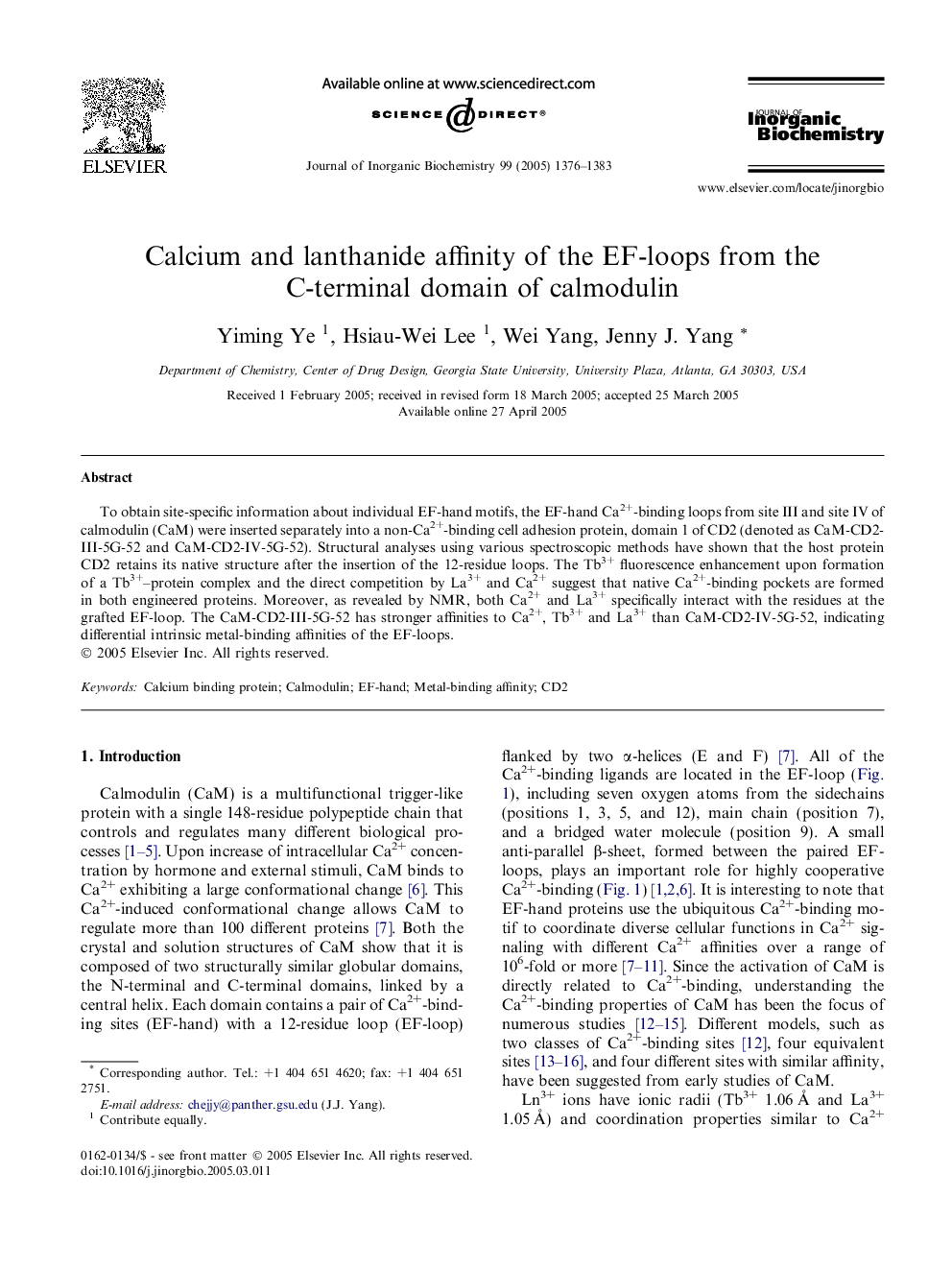| Article ID | Journal | Published Year | Pages | File Type |
|---|---|---|---|---|
| 10574919 | Journal of Inorganic Biochemistry | 2005 | 8 Pages |
Abstract
To obtain site-specific information about individual EF-hand motifs, the EF-hand Ca2+-binding loops from site III and site IV of calmodulin (CaM) were inserted separately into a non-Ca2+-binding cell adhesion protein, domain 1 of CD2 (denoted as CaM-CD2-III-5G-52 and CaM-CD2-IV-5G-52). Structural analyses using various spectroscopic methods have shown that the host protein CD2 retains its native structure after the insertion of the 12-residue loops. The Tb3+ fluorescence enhancement upon formation of a Tb3+-protein complex and the direct competition by La3+ and Ca2+ suggest that native Ca2+-binding pockets are formed in both engineered proteins. Moreover, as revealed by NMR, both Ca2+ and La3+ specifically interact with the residues at the grafted EF-loop. The CaM-CD2-III-5G-52 has stronger affinities to Ca2+, Tb3+ and La3+ than CaM-CD2-IV-5G-52, indicating differential intrinsic metal-binding affinities of the EF-loops.
Related Topics
Physical Sciences and Engineering
Chemistry
Inorganic Chemistry
Authors
Yiming Ye, Hsiau-Wei Lee, Wei Yang, Jenny J. Yang,
